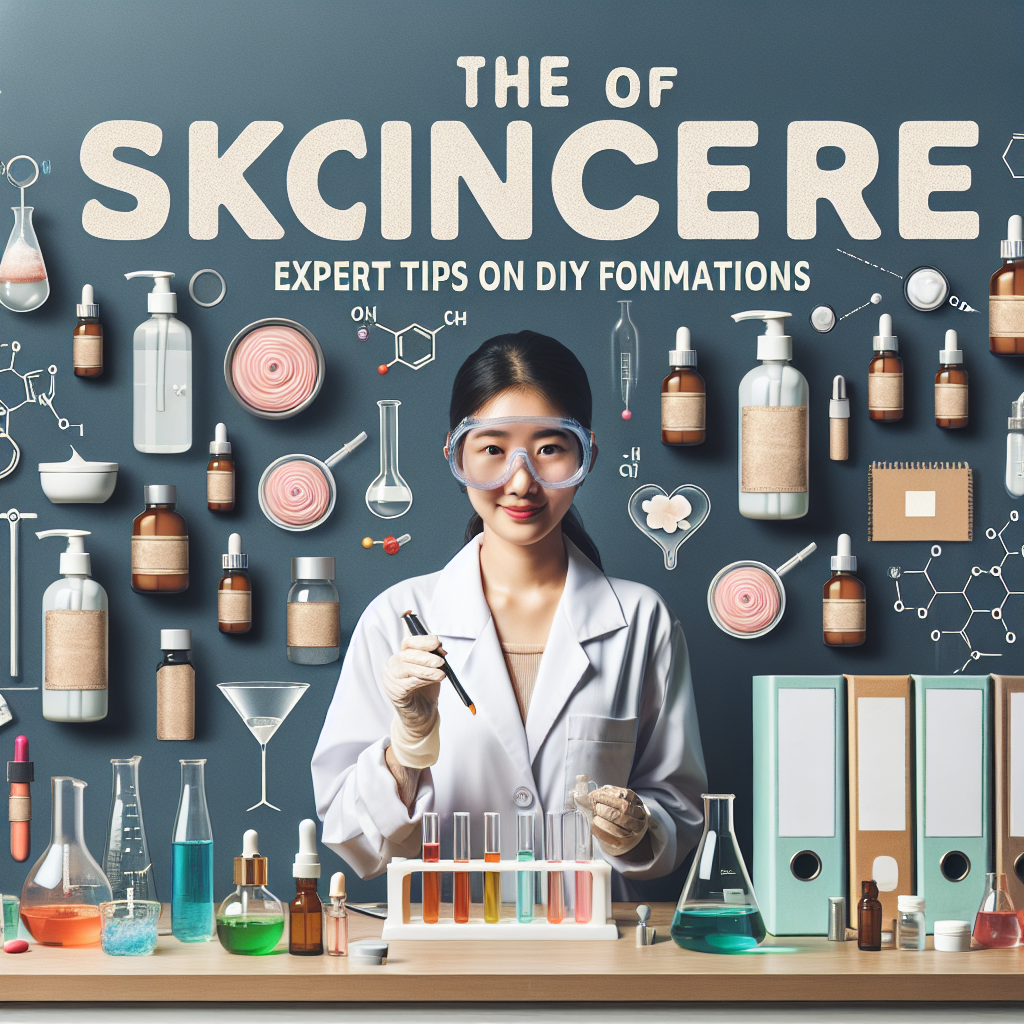Skincare has evolved from simple routines to complex formulations backed by scientific research. With a growing interest in natural and DIY products, understanding the science behind skincare ingredients is essential for creating effective formulations at home. In this article, we’ll delve into the building blocks of skincare, the importance of formulation, and expert tips for creating your own DIY skincare products.
Understanding Skin Types and Needs
Before embarking on any DIY skincare journey, it’s crucial to identify your skin type. Each skin type—oily, dry, combination, sensitive, or mature—has distinct needs. Knowing your skin type helps you choose the right ingredients for your formulations, enhancing effectiveness and minimizing adverse reactions.
Identifying Your Skin Type
- Oily: Shiny appearance, enlarged pores, and prone to acne.
- Dry: Flaky, rough texture, and may feel tight after cleansing.
- Combination: Mix of oily and dry areas; typically oily in the T-zone.
- Sensitive: Easily irritated, redness, and possible allergic reactions.
- Mature: Loss of elasticity, wrinkles, and fine lines.
The Basics of DIY Formulations
Creating your own skincare products can be rewarding and fun. However, understanding the basic science behind the ingredients is vital for formulating safe and effective products.
Key Ingredients to Consider
- Emollients: Oils and butters that moisturize the skin (e.g., coconut oil, shea butter).
- Humectants: Substances that draw moisture to the skin (e.g., glycerin, hyaluronic acid).
- Surfactants: Ingredients that help cleanse by removing dirt and oil (e.g., castile soap).
- Preservatives: Ingredients that prevent microbial growth in formulations (e.g., vitamin E, rosemary extract).
Formulation Tips from Experts
To ensure your DIY skincare products are effective and safe, here are some expert tips to consider:
1. Start Simple
If you’re new to DIY skincare, begin with basic formulations like oils or butters before progressing to emulsions or serums. This builds your confidence and understanding of how different ingredients work together.
2. Research Ingredients
Before incorporating any new ingredient, research its properties and benefits. Look for peer-reviewed studies or consult reputable sources to understand how it interacts with the skin.
3. Conduct Patch Tests
To avoid adverse reactions, always conduct a patch test with any new formulation. Apply a small amount to a discreet area of skin (like your inner wrist) and wait 24 hours to check for any signs of irritation.
4. Use Proper Measurements
Precision is key in skincare formulation. Invest in a digital scale to accurately measure the weight of your ingredients, ensuring consistency and effectiveness in your DIY products.
5. Keep Everything Clean
Sanitation is crucial in preventing contamination. Clean your workspace, tools, and containers thoroughly before beginning your formulation process.
Popular DIY Skincare Recipes
Here are some simple DIY recipes to get you started on your skincare formulation journey:
Hydrating Face Serum
Ingredients:
- 1 oz. Jojoba Oil (emollient)
- 0.5 oz. Rosehip Seed Oil (rich in vitamins)
- 10 drops of Frankincense Essential Oil (anti-aging)
Instructions:
1. Combine all oils in a glass dropper bottle.
2. Shake gently to mix.
3. Apply a few drops to your face after cleansing.
Gentle Exfoliating Scrub
Ingredients:
- 1 cup Brown Sugar (natural exfoliant)
- 1/4 cup Coconut Oil (moisturizer)
- 10 drops of Lemon Essential Oil (brightening)
Instructions:
1. Mix all ingredients in a bowl.
2. Store in an airtight container.
3. Use 1-2 times a week by massaging onto damp skin and rinsing off with warm water.
Final Thoughts
DIY skincare is an exciting journey into understanding how to care for your skin through personalized formulations. With the right knowledge, ingredients, and techniques, you can create products tailored to your unique skincare needs. Always remember that while DIY formulations can be fun and beneficial, consult with a dermatologist or skincare professional if you have specific skin concerns.

